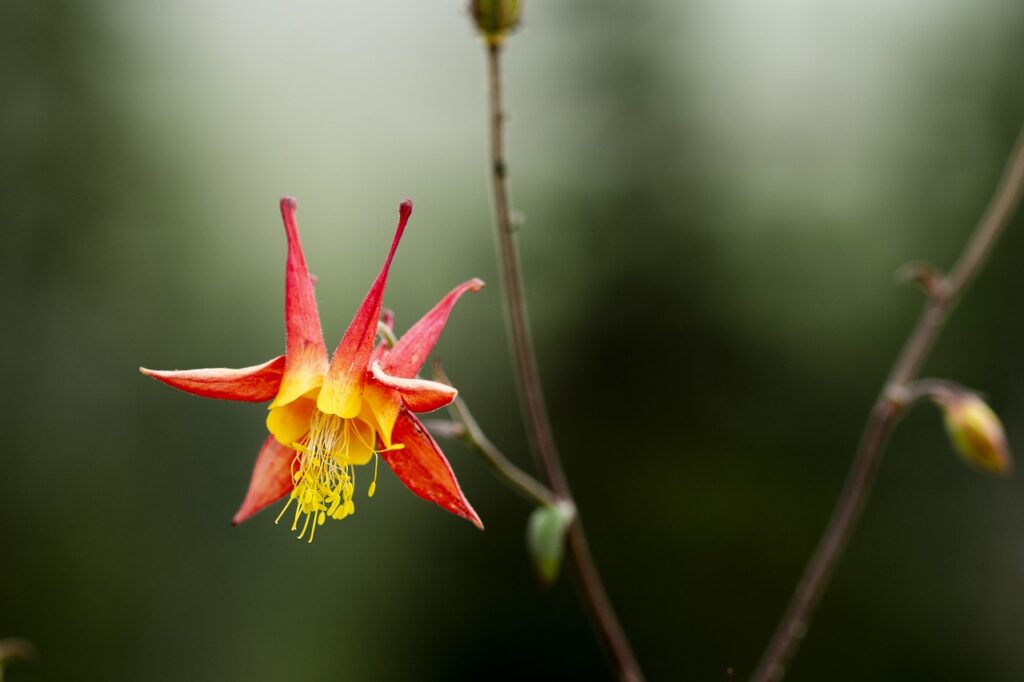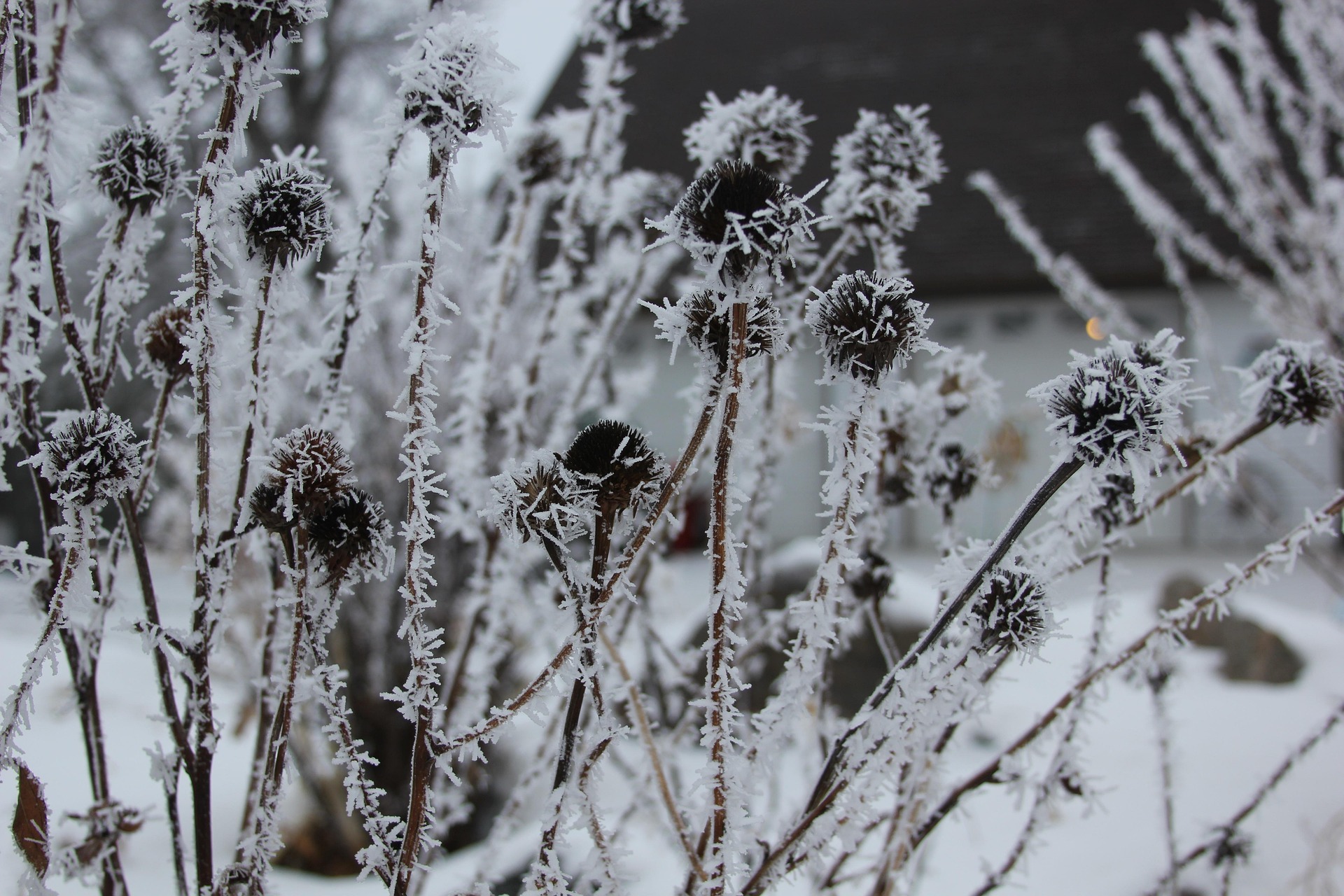

Published in the News-Review on January 31, 2025
By: Julie Burchstead
“Growth from the Cold”
Question: The seed packet states my Western columbine seeds need 60 days of cold stratification. What does that mean and how do I do it?
Answer: Cold stratification is a common germination requirement for many seeds, particularly for many seeds of wildflowers and native plants. Columbine needs 60 days of relatively consistent cold. Fortunately, there are ways to accomplish this suitable for backyard gardeners.
Winter settled heavily into the Umpqua Valley this past week, wrapping us in bone-chilling fog, blankets of grey, and nights begging for cocooning quilts and cozy flannel pajamas. However we may feel about this season, many seeds require long periods of cold dormancy as a key to unlock their cycle of growth. Somehow seeds, those tiny packets of DNA, hold the ability to count out the duration of winter, to better avoid the accident of reaching tender new shoots into the world when they might be extinguished by frost.
Seeds in the wild experience winter naturally. But when we seal them into paper packets and bring them into our temperature-controlled homes, we remove them from seasonal signals. Gardeners can provide cold stratification through protected outdoor winter sowing or indoor refrigeration.
Indoor refrigeration method
Place seeds into plastic bags onto a slightly moistened paper towel. You can also use small lidded containers of sterile, slightly moist soil. Store in your refrigerator for the period of cold indicated on your seed packet. Monitor the moisture level and check for mold at least once a week. When sprouting occurs in the bags, transfer seed to pots outdoors. In the containers with soil, transplant after cotyledon leaves appear. It can be tricky to 1. Have enough space, 2. Get the moisture level just right (so seeds don’t completely dry out or mold), 3. Remember to monitor them (out of sight=out of mind). I have much more success with protected outdoor winter sowing. But if you have missed the window needed for outdoors, your refrigerator might do.
Protected outdoor winter sowing
Nature, in her abundance, tosses seeds to the wind to do as they may. As gardeners, we can sprinkle seeds directly into our gardens and hope for the best. But seeds might land badly or be carried away by wind, rain or birds. Because we are limited to the quantity of seeds gathered or dearly purchased, and because we want to more carefully direct the location in which they sprout, even when we sow seeds outdoors to experience natural winter, we may want to tip the balance of success in our mutual favor. That is where a bit of control and protection factor in.
Timing
In much of Douglas County, winter is a bit fickle. We can have warm weather well into fall. As I write this, until this past week’s hard frosts, I had lavender and echinacea with fresh bloom! In the Umpqua Valley we tend to have our most consistent strings of coldest days December-February. By March and April and even into May, frosts are possible, but many warm days are often in the mix. I try to time getting my flats and milk jugs of seeds out in December, New Year’s Day at the latest. The seed packets will be a guide.
Location: I choose a wind sheltered place in my yard that is away from foot and pet traffic, but where they will get some sun and I have easy access to water. I set my jugs and trays right onto the ground.
Protection from predators: If you have snails and slugs or are planting larger seeds that will be attractive to birds, you will need to take precautions. You might not be seeing snail and slug activity, but if you have had them, they are there.
Planting: Choose seed trays or other containers with drainage holes. Deeper containers will allow more time before needing to transplant. Use soil without fertilizers. Finer is better. You can purchase seed starting soil mixes, or screen sift your own compost. Moisten it. Tamp it down lightly. Add seeds according to the directions on the packet. Some need to be planted as deep as they are wide. Some need a light covering. Some prefer to lie on top of the soil. Note your planting day on a calendar, as well as the amount of time needed for cold stratification. Larger seeds are easier to space. Tiny seeds are more difficult to spread out. I don’t worry about it. I sprinkle them across the surface knowing I can thin or space them out later.
Watering: The trays or containers need to be monitored. Sometimes we have strings of wet days. Sometimes dry. I try to keep my trays uniformly slightly moist. I use a mister to water when they are newly planted, really until they are well sprouted so I don’t wash away the seeds or make the containers too wet.
Thinning or pricking out: When the seedlings have grown their first set of true leaves it is time to make a decision. Will you thin and discard some seedlings to allow others to have more space? Or will you “prick out” and transplant?. I like to have as many plants as possible, so I tend to prick out and transplant. Pricking out means gently taking a spoon and lifting under a crowd of seedlings, further lifting and separating the tiny plants by the leaves (don’t handle the seedlings by the stem), and carefully transplanting them into a larger pot, or if the timing is right, into their new home in your garden where you have created a tiny bed of potting soil (scraping away any mulch first). Seedlings look fragile but are tougher than you think.
This is a process that takes trial and error. I have started many wildflowers this way, but you may find some that only tolerate direct sowing.
There is something very hopeful about planting in the dead of winter. No matter how desolate the landscape appears now, or how harsh the climate that surrounds us, growth comes.
Do you have a gardening or insect question? Contact the Douglas County Master Gardeners at douglasmg@oregonstate.edu or 541-672-4461 or visit 1134 SE Douglas Ave., Roseburg. Douglas County Master Gardeners are trained volunteers who help the OSU Extension Service serve the people of Douglas County.

